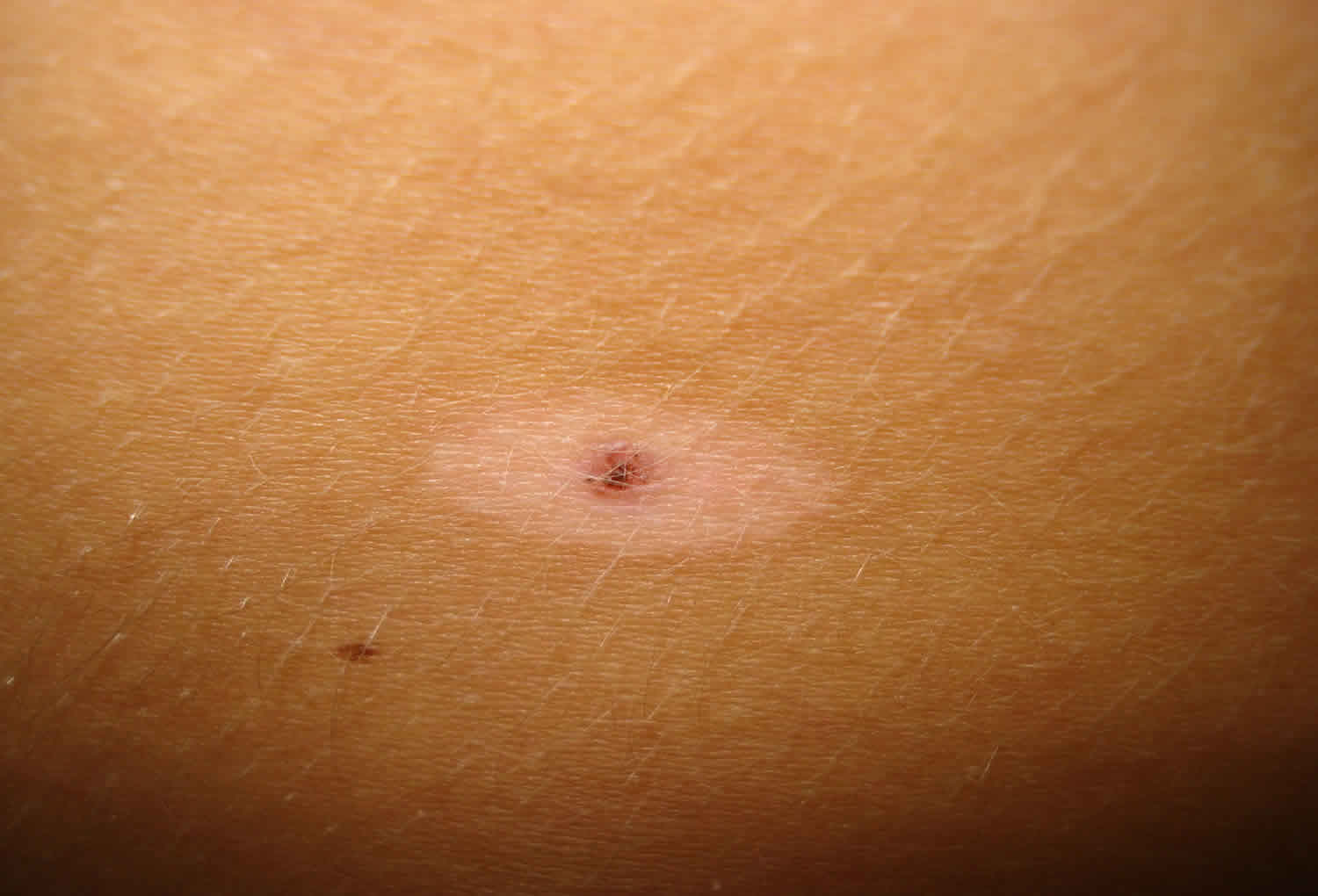What is halo nevus
A halo nevus is an otherwise normal mole with a white ring or halo, around it. The central dark brown nevus fades from dark brown to light brown to pink, eventually disappearing completely. Halo nevus is also known as:
- Halo melanocytic nevus
- Halo mole
- Regressing nevus
- Sutton nevus
- Leukoderma acquisitum centrifugum.
Halo nevus is fairly common, with an estimated prevalence of 1% of the white-skinned population. Halo nevi may occur either as solitary lesions or as multiple lesions within the same individual. Lesions often occur on the trunk but can be elsewhere. Halo nevus is usually seen in healthy children with average age of 15 years or young adults of either sex. Halo nevus can occur at an older age too. Halo nevus can be seen as part of a more generalized pigment loss, vitiligo, and halo nevi may also be associated with another autoimmune disease. They may rarely arise as a reaction to advanced melanoma and in patients with metastatic melanoma treated with targeted therapy or immune checkpoint inhibitors such as pembrolizumab or nivolumab.
The preexisting nevus is typically a common acquired nevus, but the halo phenomenon has been reported in conjunction with congenital nevi and Spitz nevi as well.
Halo nevus causes
Why halo nevus develops is not fully understood. Halo nevus is currently classified as autoimmune in origin. The onset of a halo nevus may be triggered by sunburn or local trauma, which causes the mole to be recognized by the immune system as foreign, resulting in an attack by circulating antibodies and CD8+ T lymphocytes. The reaction also affects the normal skin around the mole, which also has pigment cells in it, causing depigmentation.
Halo nevi can be associated with other autoimmune disorders, such as vitiligo and Hashimoto thyroiditis. Since halo nevi are relatively common in a young healthy population, the presence of halo nevi in themselves is not generally considered to be an indication for a work-up to detect the presence of additional autoimmune disorders in the absence of appropriate signs or symptoms.
Development of halo nevus has also been associated with psychosocial stress.
Halo nevus signs and symptoms
A solitary halo nevus or multiple halo nevi are most often found on the trunk. They are less common on the head and are rare on the limbs. The affected halo nevi are dermal nevi that are congenital or have arisen during childhood. Halo nevi may follow the Koebner phenomenon, arising within a mole that has been injured in some way.
The white halo is usually about 0.5–1.0 cm wide and is symmetrical (round or oval in shape). The halos develop at intervals round one or several moles, but not around all of them.
There are four stages of a halo nevus. It may take several years to complete the cycle. Multiple halo nevi can be at different stages.
- Stage 1: A rim of pale skin surrounds a mole
- Stage 2: The mole may become pinker or less pigmented, and fades away
- Stage 3: A circular or oval area of depigmentation persists
- Stage 4: The affected skin gradually returns to its normal color.
Halo nevus diagnosis
Halo nevus is a clinical diagnosis. Dermoscopy may be used to evaluate the structure and color of halo nevus. A full skin examination should be performed (especially in adults), as rarely, halo nevus can be triggered by the presence of a malignant melanoma elsewhere.
Occasionally, if it has atypical features such as irregularity in structure or color, excision of a solitary halo nevus is recommended to make sure it is benign. Histology reveals a band-like lymphohistiocytic infiltrate in the dermis under the nevus.
Halo nevus treatment
Apart from an explanation, no treatment is normally required for a typical halo nevus. The white skin of a halo nevus will burn particularly easily in the sun because it is missing protective melanin pigment. Cover up or apply sunscreen during summer to prevent sunburn.
Surgery is not usually necessary but may be recommended if there are atypical features such as irregularity in the structure of halo nevus.





